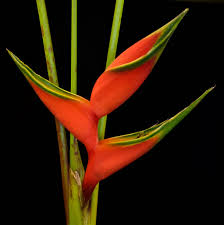Why Does the Heliconia Look Like a Lobster Claw?
Heliconias are a type of tropical flowering plant known for their vibrant colors and unique shapes. One of the most distinctive features of the Heliconia is its resemblance to a lobster claw. But why is this the case? Here are some of the theories behind the Heliconia’s unusual shape.

One theory is that the Heliconia’s shape has evolved to attract pollinators. The bright colors and unique shape of the flower make it an attractive target for hummingbirds, which are one of the plant’s primary pollinators. The curved shape of the flower allows the hummingbird to perch on the plant while it drinks nectar from the flower’s deep, narrow tubes. The shape also helps to prevent rainwater from diluting the nectar, which would make it less attractive to hummingbirds.
Another theory is that the Heliconia’s shape is a result of coevolution with its pollinators. The shape of the flower may have evolved to match the shape of the hummingbird’s bill. This allows the bird to more easily extract nectar from the flower. Over time, as the Heliconia and hummingbird species evolved together, the shape of the flower became more and more specialized to attract and accommodate its pollinators.
A third theory is that the Heliconia’s shape is simply a result of genetic drift. This theory suggests that the unusual shape of the flower is a random mutation that was not necessarily selected for any specific advantage. However, over time, the Heliconia’s lobster claw shape may have become more common in the population as a result of genetic drift, ultimately leading to its prevalence today.
Regardless of the exact reason for the Heliconia’s shape, it is clear that the lobster claw shape is an important part of the plant’s survival strategy. By attracting pollinators and providing them with nectar, the Heliconia is able to reproduce and propagate its species. And with its unique, eye-catching shape, the Heliconia is sure to continue capturing the imaginations of plant enthusiasts.